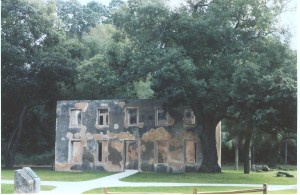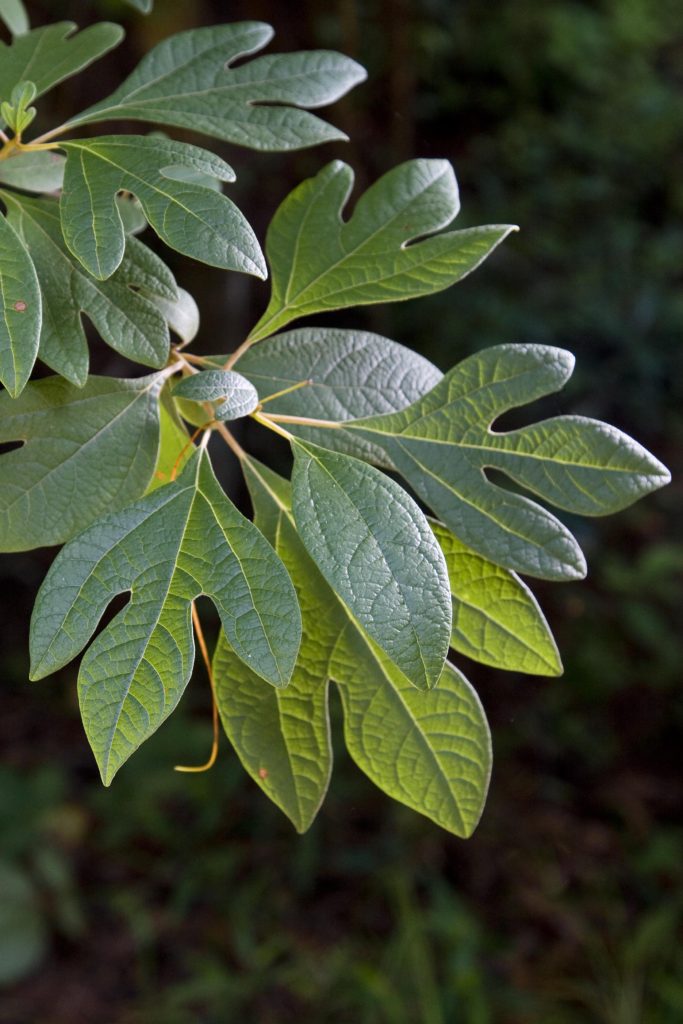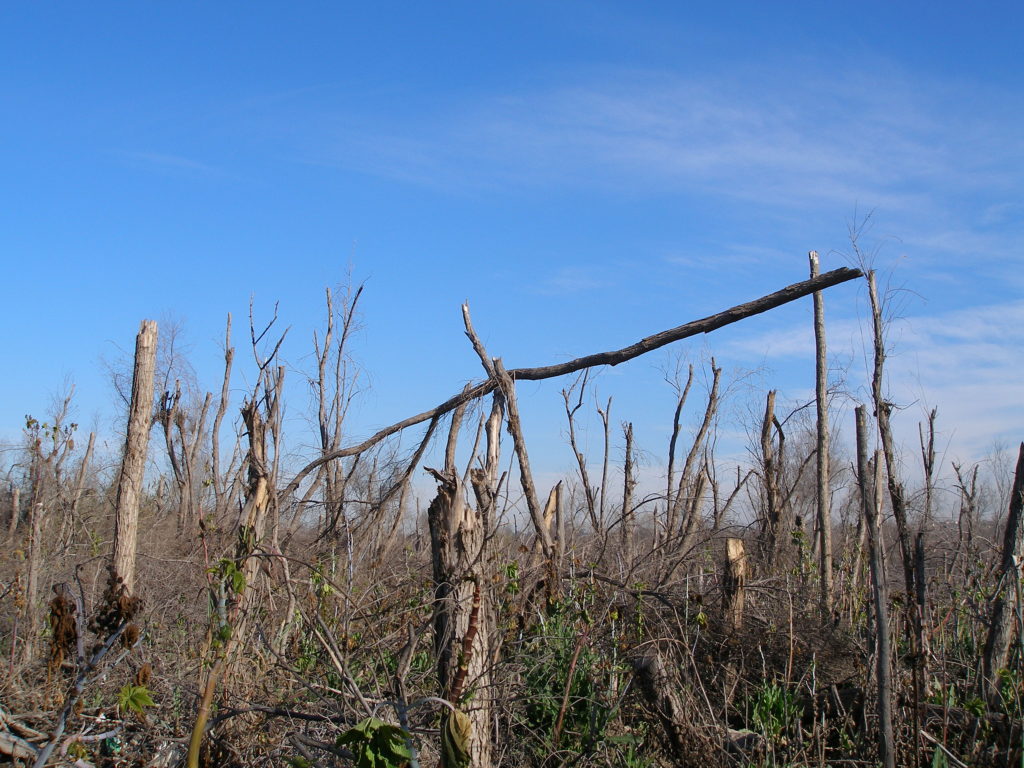
photo by Faith Campbell
A recent USFS book on invasive species reports that at least 58 species of bark and ambrosia beetles have been established in the US. Recent studies highlight very different situations due to two invasive ambrosia beetles. Here are summaries of each.
1. Laurel Wilt: Unmitigated Disaster in Atlantic and Gulf Coastal Plains – and Possibly More Widely
The disease laurel wilt, caused by the pathogen Raffaelea lauricola and vectored primarily by the redbay ambrosia beetle (Xyleborus glabratus) presents a dire contrast. (For this section, see Olatinwo, Fraedrich & Mayfield. 2021; full reference at end of the blog.) In the nearly 20 years since its first detection near Savannah, Georgia in 2002, laurel wilt has spread across more than 100 counties and parishes in 11 states from North Carolina south through Florida, west to eastern Texas, and as far northward as Kentucky.
Laurel wilt has killed hundreds of millions of trees in the plant family Lauraceae. Approximately 13 Lauraceae species in eight genera (depending on taxonomic proclivities!) are indigenous to the U.S. Individual species’ vulnerability appears to depend largely on size; the beetle is attracted to vertical stems of a certain diameter. As a result, the native tree species redbay (Persea borbonia), swampbay (Persea borbonia var. pubescens or P. palustris), and more recently sassafras (Sassafras albidum) have experienced the most damaging attacks. Also heavily attacked has been the commercial avocado (Persea americana) which is native to Central America.

While redbay is widespread in a defined geographic area – a long the Atlantic and Gulf Coastal Plain from North Carolina to Texas, sassafras is subcontinental: it is found in 28 states, 53 ecoregions, and 69 forest types. Approximately 80% of sassafras in affected areas have been killed. In recent years, spread has proceeded by many “jumps” to disjunct areas where sassafras occurs in isolation from other hosts. At present, approximately 52% of the range of sassafras might experience winter temperatures sufficiently cold to cause significant mortality of the redbay ambrosia beetle. However, this temperature protection is likely to decline to about10% of sassafras’ range as a result of even modest climate change (a 1.4 °C increase in winter minimum temperatures).
The ecological impact of loss of redbay and sassafrass are not clear. Both are sources of wildlife food. The principal specialist on redbay is the Palamedes swallowtail butterfly (Papilio palamedes), which is also the primary pollinator of a rare plant, yellow-fringed orchid. The rapid loss of swampbay on tree islands in the Everglades could facilitate establishment of even more individuals of the already widespread invasive plant species Brazilian pepper (Schinus terebinthifolius) or Melaleuca quinquenervia.
Other U.S. native plant species in the Lauracea family are apparently partially protected by the small diameter of their stems, which the beetle doesn’t find acceptable. These include – in the Southeast — the federally listed pondberry (Lindera melissifolia), “species of interest” pondspice (Litsea aestivalis), bog spicebush (Lindera subcoriacea), pepperleaf sweetwood (Licaria trianda), lancewood (Ocotea coriacea), and love-vine (Cassytha filiformis). The common shrub spicebush (Lindera benzoin) might be protected by its possession oflower quantities of the primary host volatile attractant. On the other hand, the widespread Pacific state shrub California laurel or Oregon myrtle (Umbellularia californica) is considered highly vulnerable, should laurel wilt be moved there in wood, mulch, or nursery plants.
Laurel wilt poses an unknown threat to the many plant species in the Lauraceae in Central and South America (750 species), Australia (125 species), Madagascar (135 species), and the Macaronesian Islands off the coasts of Europe and Africa – the Azores, Canary Islands, and Madeira. The commercial spice bay laurel (Laurus nobilis) is native to the Mediterranean region (and planted elsewhere, including in the US). However, its small size, discontinuous distribution and isolation from other lauraceous host species might prevent development of a widespread epidemic.
The authors note the absence of effective measures to manage laurel wilt 20 years after its detection. They recommend restricting long-distance movement of infested wood, associated public awareness efforts, development and deployment of resistant hosts, silviculture (sanitation), targeted application of preventive chemical treatments for protecting high-value trees, and severing root grafts in avocado orchards and sassafras clones. They note that success will be dependent on sustained funding and a commitment to long-term area-wide implementation.
[As I noted in past blogs about APHIS deregulating the emerald ash borer, it is now up to the states to regulate movement of firewood. The lead will continue to be the non-governmental “Don‘t Move Firewood” campaign. The message will continue to encourage the public to buy firewood where they burn it and to refrain from moving firewood from areas that are under Federal quarantine for other pests of firewood (e.g., Asian longhorned beetle). This campaign and the new National Plant Board guidelines stress that firewood is a high-risk pathway for many pests of national or regional concern; they do not focus on any particular species. Leigh Greenwood, director of Don’t Move Firewood, thinks this is a good approach.]
Mayfield adds that the spread northwards on sassafras means that state diagnostic pathology labs should familiarize themselves with protocols for isolating the laurel wilt pathogen.
As to developing resistant varieties of redbay, I note that Potter et al. 2019 ranked redbay as fifth species highest in priority for genetic conservation and restoration breeding efforts. However, it is my impression that few federal resources have been allocated to such an effort on behalf of redbay.
2. Ambrosia beetles in California
At least 22 of the recently-established ambrosia and bark beetles are in California. Heavily urbanized southern California appears to be particularly vulnerable to such introductions. The proximity of ship traffic and associated cargo, as well as the great diversity of potential hosts in the area’s urban forests, are likely to blame.
Two such pests are the polyphagous (PSHB) and Kuroshio (KSHB) shot hole borers [collectively, invasive shot hole borers (ISHB)]. John Boland has studied the KSHB outbreak in the Tijuana River estuary intensively since 2015. Two recent studies – 2019 and 2021– demonstrate the importance of ecological and tree-related factors in determining the severity of attack by this ambrosia beetle. See references at the end of the blog.
The most susceptible site is wet and nutrient enriched (in the case of the Tijuana River, due to pollution).
The most susceptible trees are young, fast growing, and have thin bark (allowing KSHB access) and wood of low density and high moisture content (providing ideal conditions for KSHB and associated fungi).

As Boland has noted, all of these conditions occurred in the “wet” forests close to perpetual streams in the Tijuana River delta in 2015. These factors led to dramatic levels of mortality, which have not been equaled in other southern California deltas. In the five years from 2015 to 2020, the beetle/fungus complex infested an estimate 350,000 willows and killed an estimated 123,000 in a boom-and-bust cycle. Since 2016, the trees in the Tijuana River estuary have regrown to almost pre-infestation dimensions. (Boland is not certain why these new, fast-growing trees have not been attacked by the KSHB that remain in the area. He suggests that a local pathogen, parasite, parasitoid or predator is keeping the KSHB in check – although this has not been verified.)
Willows near the main river channel (“Wet Forest” units) cumulatively had a fatality rate of 39%. Strikingly, more distant “Dry Forest” units had a combined fatality rate of only 9%.
The 2019 study linked the higher rates of infestation, damage, and mortality that occurred in trees near the main river channel to the presence of year-round water that was often enriched by a heavy load of sewage. The trees respond by growing rapidly, resulting in thinner bark and less dense wood. The KSHB attacked in much higher numbers, impeding water transport and weakening the trees’ structure so that they were more easily broken during windstorms.
The 2021 study provided further detail. By comparing bark samples cut from 27 infested trees at the height of the infestation, in 2016 – 17, Boland and Woodward demonstrated thicker bark on the “Dry Forest” trees protected the trees by limiting the density of KSHB entry points. The fewer holes reduced internal structural damage to the trees, which allowed them to survive. Boland notes that the protection might arise from either the bark thickness itself, or higher quantities of protective chemicals.
Repercussions
- The results suggest that a KSHB individual actively searches for a suitable tree and then searches for the thinnest bark on that tree in which to drill its hole.
- Trees can recover from KSHB attack, indicating that the fungal symbionts are only moderately pathogenic at worst.
- The ISHB are likely to cause much less damage than indicated by the one early model developed before these factors were understood. We need new models for ISHB spread and impact that incorporate these factors of site characteristics and host tree condition.
SOURCES
Boland, J.M. 2019. The Ecology and Management of the Kuroshio Shot Hole Borer in the Tijuana River Valley Final Report. (Year 5) https://trnerr.org/wp-content/uploads/2020/05/KSHB-TRValley2020.pdf
Boland J.M. and D.L. Woodward. 2021. Thick bark can protect trees from a severe ambrosia beetle attack. PeerJ 9:e10755 https://peerj.com/articles/10755/
[all of Boland’s reports and articles on the KSHB are available at: The Ecology and Management of the Kuroshio Shot Hole Borer in the Tijuana River Valley — Tijuana Estuary : TRNERR]
Olatinwo, R.O., S.W. Fraedrich & A.E. Mayfield III. 2021. Forests 2021, 12, 181. Laurel Wilt: Current and Potential Impacts and Possibilities for Prevention and Management
Potter, K.M., Escanferla, M.E., Jetton, R.M., Man, G., Crane, B.S. 2019. Prioritizing the conservation needs of US tree spp: Evaluating vulnerability to forest P&P threats, Global Ecology and Conservation (2019), doi: https://doi.org/10.1016/ j.gecco.2019.e00622.
Posted by Faith Campbell
We welcome comments that supplement or correct factual information, suggest new approaches, or promote thoughtful consideration. We post comments that disagree with us — but not those we judge to be not civil or inflammatory.
For a detailed discussion of the policies and practices that have allowed these pests to enter and spread – and that do not promote effective restoration strategies – review the Fading Forests report at http://treeimprovement.utk.edu/FadingForests.htm